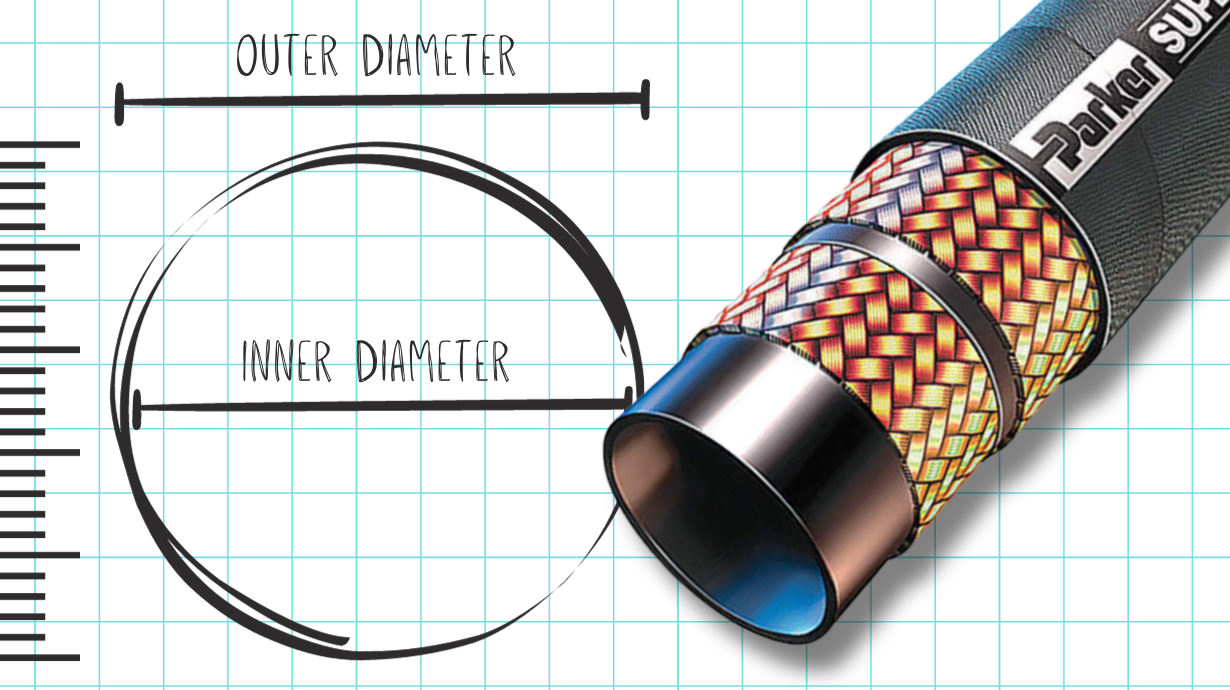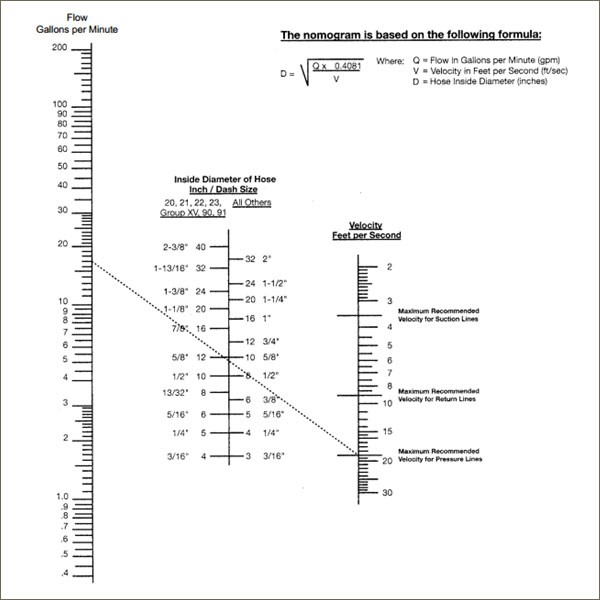When Size Matters: Your Guide to Properly Sizing Hydraulic Hose

In the world of hydraulics, bigger isn't always better. Just like Goldilocks and her porridge, a hose size needs to be just right to ensure optimal performance, prevent leaks, and safeguard your equipment. Too small and you risk flow restriction, leaks, and system damage; too large and you're looking at sluggish performance and reduced productivity. So, how do you ensure you get just the right fit?
Sizing Specifications
Sizing specifications for hydraulic hose include inner diameter, outer diameter, and length. The outer diameter (OD) measures the entire span of a hose, including the cover, reinforcement, and inner tube, while the inner diameter (ID) measures the empty space across the span of the inner tube. ID affects the flow velocity of the fluid within the hose, while the OD helps to determine appropriate fittings and system components. The length of the hydraulic hose measures the maximum reach between end-points. However, hose length is a function of head loss due to friction, and a longer hose will increase the pressure drop in the system.
Dash Size
When it comes to hydraulic hose, a useful feature for identifying hose ID is dash size. Simply put, the dash size refers to the ID of a hose in 1/16" increments. For example, a hose whose dash size is -4 would have an inner diameter of 4/16” (or ¼”). This differs from tube measurements, which are categorized by OD.
Nomogram
A nomogram is a chart that acts as a matchmaker between your system's flow requirements, flow velocity, and hose ID. When one of these factors is unknown, a nomogram helps you to quickly determine the best choice for optimal performance based on the two known variables. The experts at Triad Technologies can help you interpret nomograms and ensure your selection is spot-on.


How to use the nomograph shown here:
1. Identify your two known variables
2. Lay a straightedge to intersect these two values and continuing through the chart for the unknown value
3. Intersection on the third vertical line gives the value of that factor
In this example, if we know that our flow rate will be 16 gal./min. and our velocity is 20 ft/sec, we can mark these numbers on the corresponding rulers, then use a straightedge to connect the two values. The ideal hose ID/dash size (center column) can be determined where this line intersects. In this case, the hose would need to be -10 (5/8") inch (or larger). This easy and effective tool for helping size your hydraulic hoses. Most manufacturers, like Parker Hannifin, offer downloadable nomograms for their hose lines.
So, next time you face the challenge of hose sizing, remember: when it comes to hydraulics, size does matter. Choosing the right hose size is about understanding your specific application and prioritizing safety and performance. At Triad Technologies, we offer a comprehensive range of high-quality hoses, fittings, and expert advice to help you navigate the hydraulic jungle with confidence. Contact us today or leave a comment below and let us guide you towards your perfect hydraulic fit!